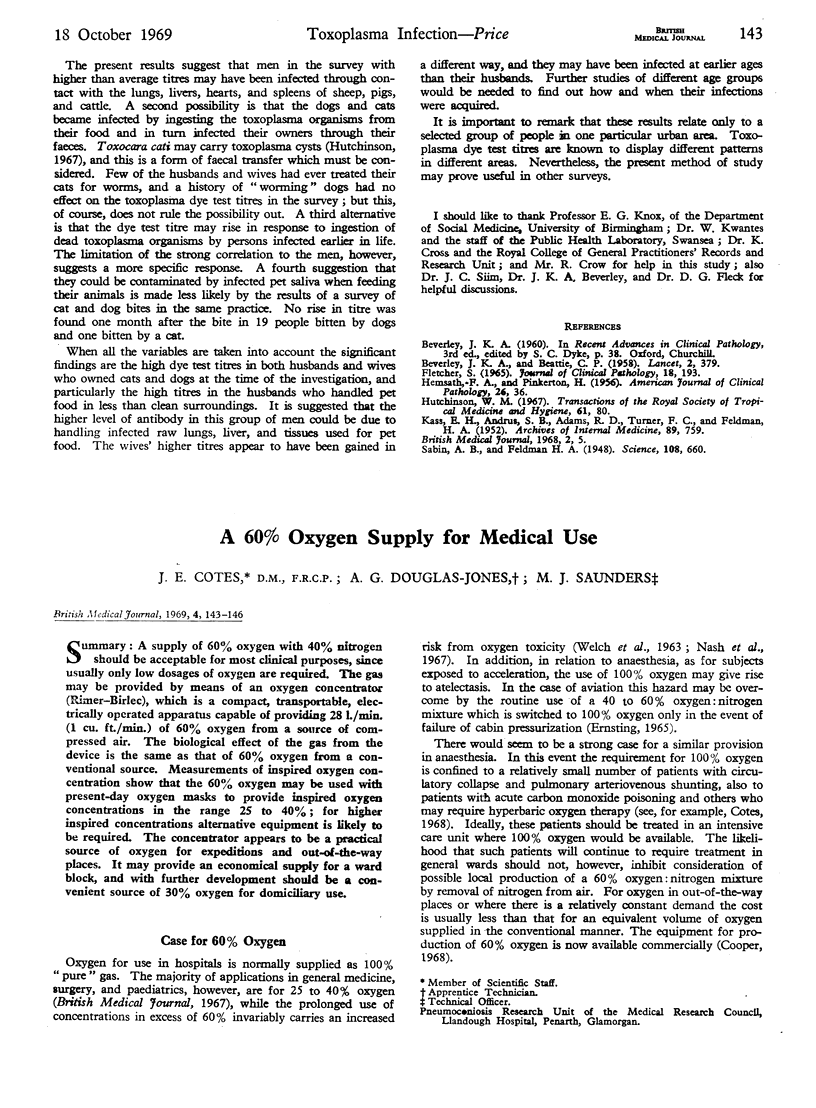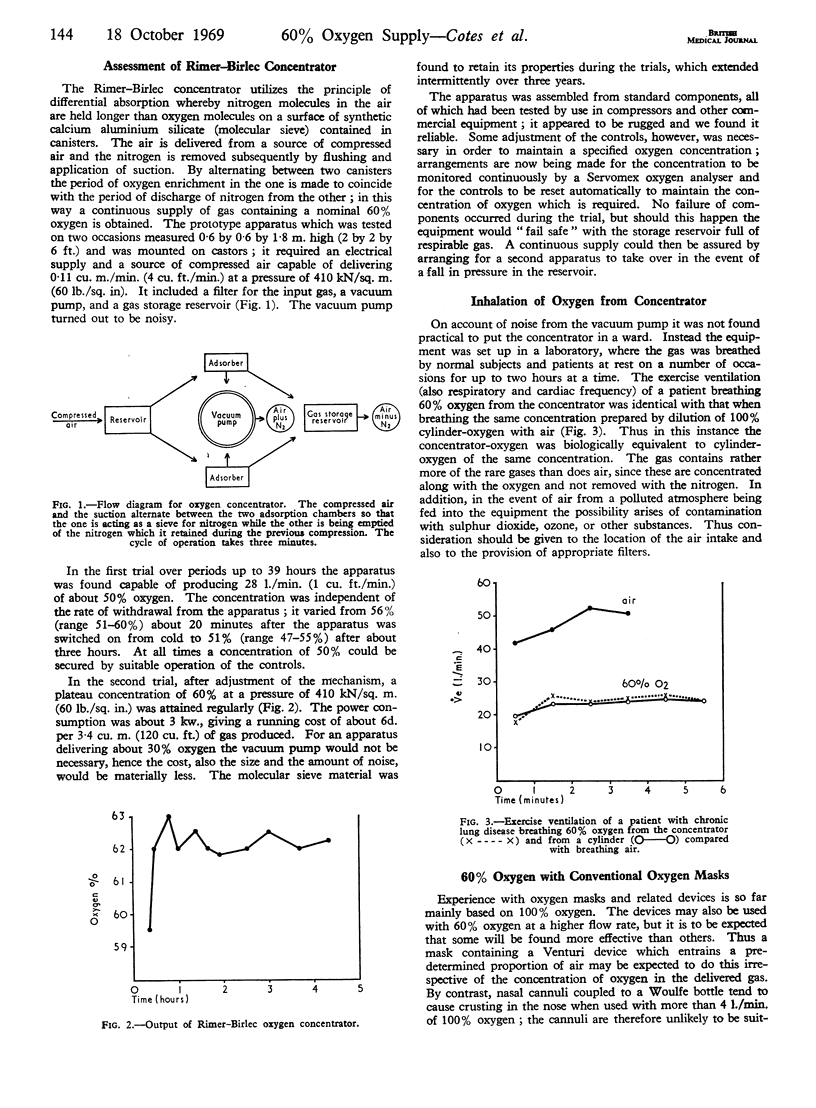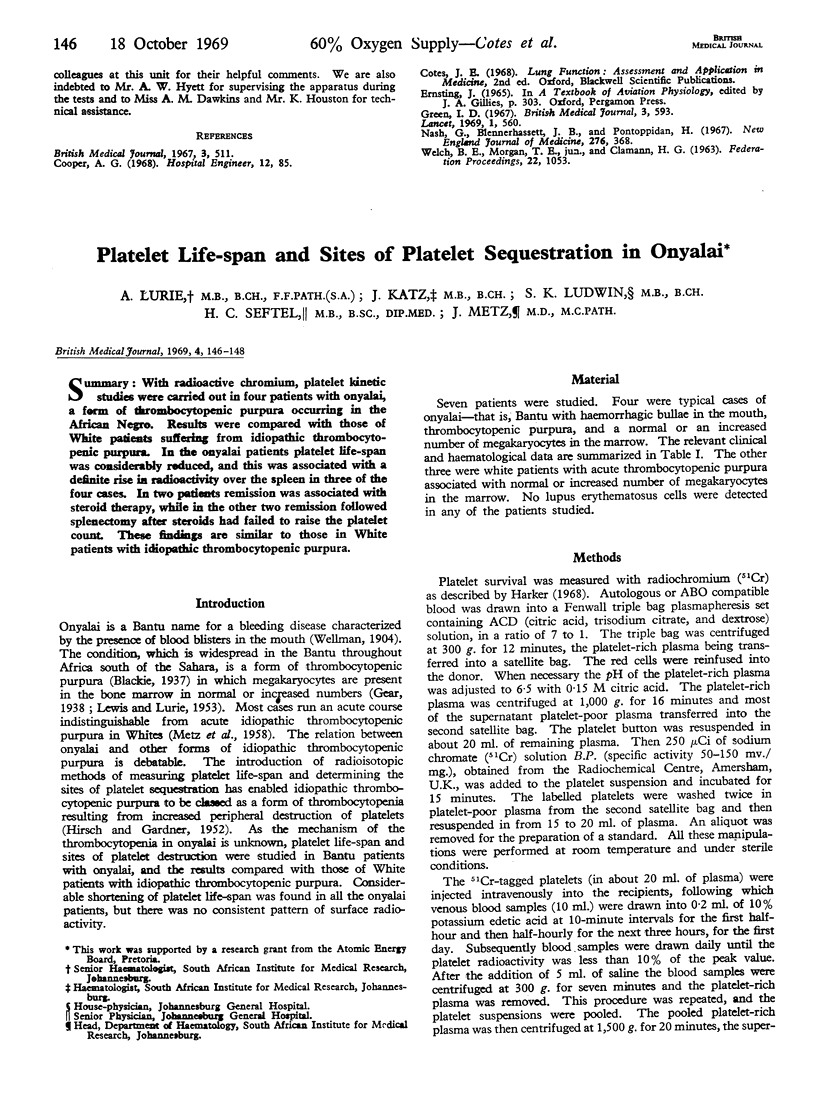Abstract
A supply of 60% oxygen with 40% nitrogen should be acceptable for most clinical purposes, since usually only low dosages of oxygen are required. The gas may be provided by means of an oxygen concentrator (Rimer–Birlec), which is a compact, transportable, electrically operated apparatus capable of providing 28 l./min. (1 cu. ft./min.) of 60% oxygen from a source of compressed air. The biological effect of the gas from the device is the same as that of 60% oxygen from a conventional source. Measurements of inspired oxygen concentration show that the 60% oxygen may be used with present-day oxygen masks to provide inspired oxygen concentrations in the range 25 to 40%; for higher inspired concentrations alternative equipment is likely to be required. The concentrator appears to be a practical source of oxygen for expeditions and out-of-the-way places. It may provide an economical supply for a ward block, and with further development should be a convenient source of 30% oxygen for domiciliary use.
Full text
PDF



Selected References
These references are in PubMed. This may not be the complete list of references from this article.
- Green I. D. Choice of method for administration of oxygen. Br Med J. 1967 Sep 2;3(5565):593–596. doi: 10.1136/bmj.3.5565.593. [DOI] [PMC free article] [PubMed] [Google Scholar]
- Nash G., Blennerhassett J. B., Pontoppidan H. Pulmonary lesions associated with oxygen therapy and artifical ventilation. N Engl J Med. 1967 Feb 16;276(7):368–374. doi: 10.1056/NEJM196702162760702. [DOI] [PubMed] [Google Scholar]
- WELCH B. E., MORGAN T. E., Jr, CLAMANN H. G. TIME-CONCENTRATION EFFECTS IN RELATION TO OXYGEN TOXICITY IN MAN. Fed Proc. 1963 Jul-Aug;22:1053–1056. [PubMed] [Google Scholar]


